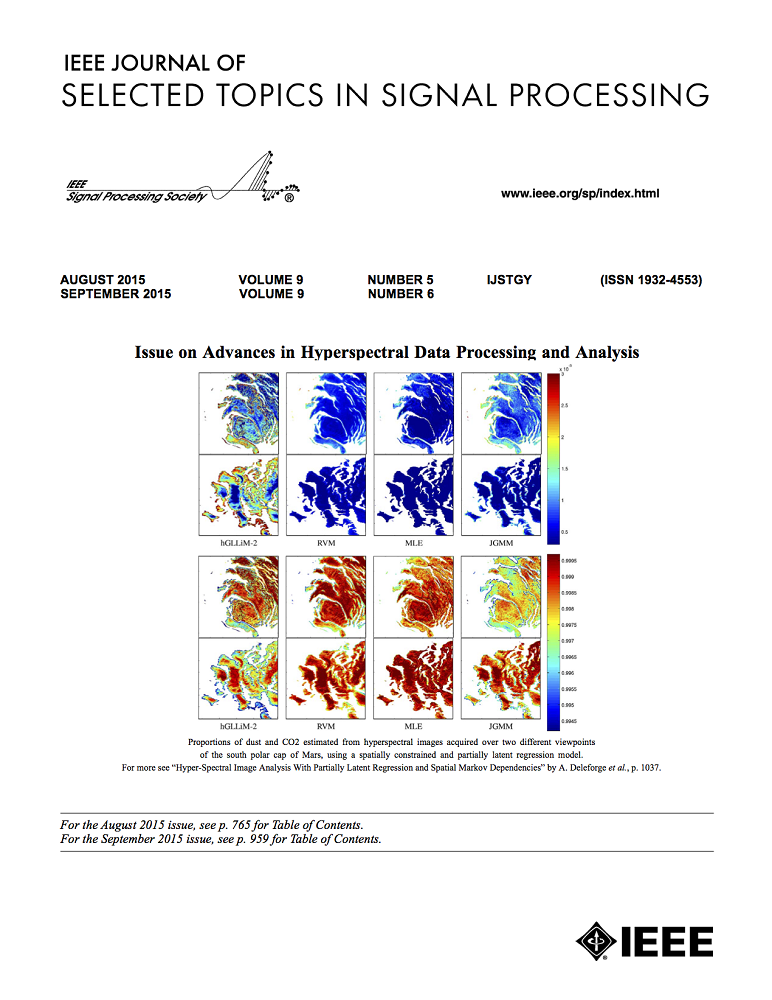最小算法延迟的改进型别名和分离语音编码框架
IF 8.7
1区 工程技术
Q1 ENGINEERING, ELECTRICAL & ELECTRONIC
IEEE Journal of Selected Topics in Signal Processing
Pub Date : 2024-11-18
DOI:10.1109/JSTSP.2024.3501681
引用次数: 0
摘要
本文章由计算机程序翻译,如有差异,请以英文原文为准。
Improved Alias-and-Separate Speech Coding Framework With Minimal Algorithmic Delay
Alias-and-Separate (AaS) speech coding framework has shown the possibility to encode wideband (WB) speech with a narrowband (NB) speech codec and reconstruct it using speech separation. WB speech is first decimated incurring aliasing and then coded, transmitted, and decoded with a NB codec. The decoded signal is then separated into lower band and spectrally-flipped high band using a speech separation module, which are expanded, lowpass/highpass filtered, and added together to reconstruct the WB speech. The original AaS system, however, has algorithmic delay originated from the overlap-add operation for consecutive segments. This algorithmic delay can be reduced by omitting the overlap-add procedure, but the quality of the reconstructed speech is also degraded due to artifacts on the segment boundaries. In this work, we propose an improved AaS framework with minimum algorithmic delay. The decoded signal is first expanded by inserting zeros in-between samples before being processed by source separation module. As the expanded signal can be viewed as a summation of the frequency-shifted versions of the original signal, the decoded-and-expanded signal is then separated into the frequency-shifted signals, which are multiplied by complex exponentials and summed up to reconstruct the original signal. With carefully designed transposed convolution operation in the separation module, the proposed system requires minimal algorithmic delay while preventing discontinuity at the segment boundaries. Additionally, we propose to employ a generative vocoder to further improve the perceived quality and a modified multi-resolution short-time Fourier transform (MR-STFT) loss. Experimental results on the WB speech coding with a NB codec demonstrated that the proposed system outperformed the original AaS system and the existing WB speech codec in the subjective listening test. We have also shown that the proposed method can be applied when the decimation factor is not 2 in the experiment on the fullband speech coding with a WB codec.
求助全文
通过发布文献求助,成功后即可免费获取论文全文。
去求助
来源期刊

IEEE Journal of Selected Topics in Signal Processing
工程技术-工程:电子与电气
CiteScore
19.00
自引率
1.30%
发文量
135
审稿时长
3 months
期刊介绍:
The IEEE Journal of Selected Topics in Signal Processing (JSTSP) focuses on the Field of Interest of the IEEE Signal Processing Society, which encompasses the theory and application of various signal processing techniques. These techniques include filtering, coding, transmitting, estimating, detecting, analyzing, recognizing, synthesizing, recording, and reproducing signals using digital or analog devices. The term "signal" covers a wide range of data types, including audio, video, speech, image, communication, geophysical, sonar, radar, medical, musical, and others.
The journal format allows for in-depth exploration of signal processing topics, enabling the Society to cover both established and emerging areas. This includes interdisciplinary fields such as biomedical engineering and language processing, as well as areas not traditionally associated with engineering.
 求助内容:
求助内容: 应助结果提醒方式:
应助结果提醒方式:


